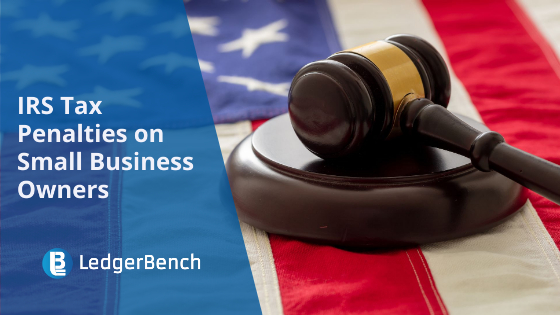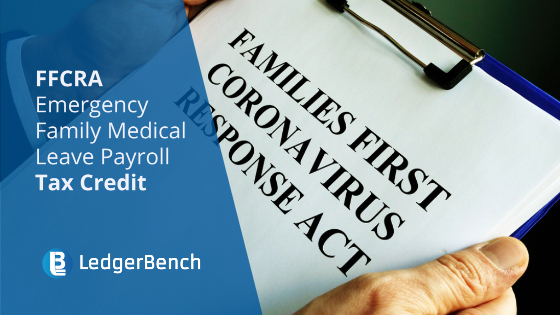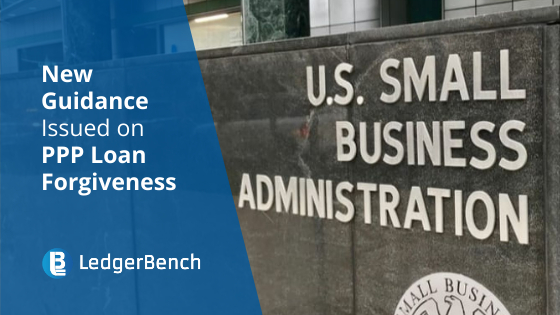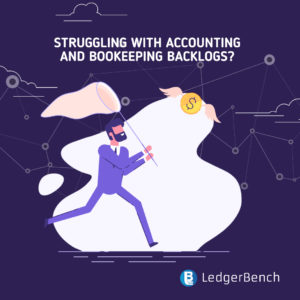
IRS, Tax, Tax Preparation
The demand for professional Tax Preparation Services has continued to increase for many years. Taxpayers are seeking more help than ever because of the Tax Cuts and Jobs Act. Whether you have a small business, freelancer, larger business it’s important to choose a professional tax preparer. Many of the taxpayers are choosing to perform complex tax preparation all by themselves, which is a perilous task. But it is vital to have a tax preparation professional rather than doing the taxes yourself.
We’ve listed legit reasons that will convince you to appoint tax professional for your small business.
Legit reasons why your small business needs professional Tax Preparation Services:
-
More time to grow your business:
Growing and sustaining your business takes time. You invest day and night to grow your business successfully. In the early stages of your small business, you’re the marketer, salesperson, product or service delivery, and everything in between. Accounting may also be part of the above list. However, tax filing can be left to the professionals as it is very important to be prepared correctly. Instead, you must focus on other core activities of the business inorder to grow. Taxes are time-consuming. The IRS estimates that it takes 16 hours to prepare to file a tax return with the long form 1040.
Delegate the task of tax filing to tax preparation services. A tax professional will reduce your time it takes to gather tax documents, forward them to office, review the final return for accuracy and much more. This will also give you peace of mind because filing taxes will not bother you. This will lower your stress and help you become more efficient.
Also Read – A Step-By-Step Guide to Ensure Payroll Compliance!
-
Tax law is too complicated:
No wonder taxes are dreadfully confusing! There are a lot of details, jargons and barrages of numbers. It is common to make a mistake especially if you’re not trained to handle the complicated tax preparation. One mistake in tax filing can be a big deal for your business. One error can trigger the IRS to question you and ultimately you might end up paying thousands in penalties and interest. New tax laws are enacted every now and then, making it tough to keep up with the changes and how they might affect your business.
But an accountant who specialises in tax preparation services will help you avoid mistakes or errors. A tax accountant is trained on complicated tax laws, provisions, policies and tax methods. The accountant knows what should be done and what strategies must be applied. The Accountant must be knowledgeable about the Tax Cuts and Jobs act as well. The TCJA has implemented dozens of changes such as retirement tax policies, excise tax, foreign business taxes, corporate tax adjustment, additional business deductions and reduced tax payments for individuals.
#1 Bookkeeping Services for Small Business
-
Maximize deductions and Tax savings:
There are thousands of tax deductions, credits and loopholes available for taxpayers and you must know which ones apply to you. Obviously, you won’t be spending too much time reading 70,000 pages of the Internal Revenue Code (IRS) to figure it out.
But a tax accountant can help you make the most of the deductions and savings by using their expertise. An experienced tax preparer knows all the tax deductions that your business may qualify for such as employee wages, costs of goods sold, employee health insurance, rent, vehicle expenses and more. With the use of tax planning, you can consult in the areas you can save with your tax accountant.
-
Better understanding of your tax situation:
A business with better understanding of tax situations is wise and rare. Once you’ve started analyzing your business taxes on your own, you’ll need the preparation of tax preparation services. It’s good to know your books and more better to allow the professional to perform the task. A tax accountant specializes in accounting books, testing formulas and understanding taxes at all possible angles. An accountant will never miss the tax deadline or tax detail.
Working with Professional Tax Preparation Services will raise your level of tax awareness. You will understand the importance of tax forms and how far tax deductions can go. You’ll understand how a proper tax service can improve the cash flow of your business.
Suggested Reads – Ways to Maximize your Tax Benefits During Covid-19
Receiving letters from the IRS is a serious concern. If you have tax preparation services, you’ll have peace of mind. Tax professionals are aware how to address IRS letters and concerns. They can formulate counter-strategies and help explain your tax situation to the tax auditor. It’s always advisable to have a tax accountant by your side when dealing with the IRS.
A tax professional does more than just filling your business taxes with the IRS. They keep up with the tax laws to help business plan for the future while remaining compliant with the law and minimizing their tax burden. They also help to resolve issues and change the way a business operates to avoid any issues in the future.
Conclusion:
If you’re trying to get the most out of your tax refund, thus saving the most money possible, you must consider hiring a tax preparer. Have you now agreed with us on how important tax preparation services can be for your small business? If yes, then you shouldn’t wait any longer! Contact us to get our best professional tax preparer to help you. Tax preparers could provide you with every possible deduction and provide considerable financial value.

IRS, Tax
Running a small business isn’t an easy task. At each step of the business growth cycle, a new challenge arises. However, one process that remains constant all throughout the business lifecycle, is Accounting and Bookkeeping.
Both these processes are the core financial processes for any business that eventually assist in easing the Tax Reporting complexities. Tax Filing is an yearly process that every business needs to comply with in order to avoid being penalised by the IRS. However, many times small business owners prefer doing their finances on their own which can result in penalties since they lack complete knowledge of the subject.
Here we will be discussing some of the common mistakes that business owners need to look out for, especially if they don’t want to seek professional help:
Underpaying estimated taxes
Lack of proper financial knowledge can at times prove to be costly for business owners. Failure to pay at least 90% of your current year tax bill can result in the IRS penalising your business.The IRS has the right to charge a penalty even if less is paid early or more has been paid later.
Suggested Reads – IRS Tax Relaxation Deadlines for Covid-19 (With State Regulations)
Failure to file penalty/late filing penalty
This penalty can be avoided by simply paying the taxes owed on time. The IRS can charge 5% a month as penalty for late filing which can go to a maximum of 25%. Also, it is interesting to note that even if you aren’t financially stable to pay your taxes, you should at least file your taxes since the penalties for not paying taxes are far lesser.
Failure to pay penalty/late payment penalty:
Yes penalty for not paying your penalties.The IRS can do this too. The failure to pay penalty rate is .5% a month on the outstanding tax balance. However, you can enter into an installment agreement to pay back the taxes owed.
Tax Penalties for Errors or Fraudulent Returns
Mistakes are a human nature and so is fraud and embezzlement. And the IRS has all the rights to penalize your business if they find out you have either knowingly or unknowingly filled false or incomplete information. Moreover, this penalty can be as much as 75 percent on top of the total owed. Therefore, it is very important that you include all your income when filing for tax.
Suggested Reads – COVID-19 | FFCRA Emergency Family Medical Leave Payroll Tax Credit
Not depositing employment taxes
Business owners who have employed individuals must deposit their share of taxes alongwith their employee’s taxes and failure to do so can result in IRS penalties.
Not separating business and personal expenses
There is also a penalty for not separating business and personal expenses since it can make it complex for the IRS to figure out the exact legitimate business expenses. This can further cause auditing complexities.
Words of Wisdom:
Paying your due taxes correctly on time is the simplest way to avoid IRS penalties!!

Finance, IRS
FFCRA stands for The Families First Coronavirus Response Act which was signed by President Trump on March 18, 2020. In brief, It provides small and mid sized employers refundable tax credits that reimburse them, dollar for dollar, for the cost of providing paid sick and family leave wages to their employees for leave related to COVID-19.
To businesses with fewer than 500 employees, FFCRA provides funds to employees with paid sick leaves and family and medical leave for reasons related to Covid-19. This is for employees’ own health needs or to take care of their family members.
As per FFCRA, workers may receive a paid sick of leave of 80 hours for their own health needs or to take care of others and additional 10 weeks of paid leave to take care of a child whose school or place of care is closed or child care provider is closed or it’s unavailable due to Covid-19 precautions. The FFCRA takes care of all these paid leaves by providing small businesses with refundable tax credits. Certain self-employed individuals with similar circumstances are entitled to similar credits.
Also Read – Ways to Maximize your Tax Benefits During Covid-19
Overview of Paid Family Leave Refundable Credit:
The FFCRA requires small size and midsize businesses to provide paid leave through two separate provisions:
-
The Emergency Paid Sick Leave Act (EPSLA):
This act entitles workers upto 80 hours of paid sick leave when they are unable to work for certain reasons related to COVID-19.
-
The Emergency Family and Medical Leave Expansion Act (Expanded FMLA):
This act entitles workers to certain paid medical or family leave.
Paid Sick Leave refers to paid leave under the Emergency Paid Sick Leave Act. Expanded Family Medical Leave refers to paid leave under the Emergency Family and Medical Leave Expansion Act. The FFCRA’s paid leave provisions are effective from April 1, 2020, and apply to leave taken between April 1,2020 and December 1, 2020.
Here, we will talk about Expanded FMLA. The FFCRA provides that employers subject to the EPSLA and Expanded FMLA paid leave requirements are entitled to fully refundable tax credits to cover the cost of the leave required to be paid for these periods of time during which employers are unable to come to work including telework. Eligible employers are entitled to refundable tax credits for collectively qualified sick leave wages and Family leave wages under sections 7001 and 7003 of the FFCRA respectively. It can be because of the need to take care of a child whose school or place of care or child care center is closed due to Covid-19 precautions.
This is entitled to paid family and medical leave equal to two thirds of the employees regular pay, multiplied by the number of hours the employee otherwise would have scheduled to work, up to $200 per day and $10,000 in the aggregate for the calendar year. Also, upto 10 weeks leave can be counted towards the family leave credit.
The eligible employee is entitled to a fully refundable tax credit equal to the 100% of the required paid family and medical leave. The tax credit also includes the eligible employer’s share of Medicare tax imposed on those wages and cost of maintaining health insurance coverage for the employee during the family leave period. However, the eligible employer is not subject to the employer portion of social security tax imposed on those wages.
You May Also Read – How to Get a Small Business Disaster Loan During COVID-19?
What is included in “ Qualified Family Leave Wages”
As defined in section 3121 (a) of the Internal Revenue Code for social security and Medicare tax purposes, Qualified Family Leave Wages are wages that eligible employers must pay eligible employees for period of leave during which they are unable to work or telework due to need for leave to care for a child of such employee if the child’s school or place of care or child care center is closed due to Covid-19 precautions. The first 10 days for which an employee takes leave for these reasons may be unpaid. However, during that 10-day period, an employee must be entitled to receive qualified sick leave wages as provided under the ESPLA or may receive other forms of paid leave, such as annual leave, accrued leave, or other paid time off under the legible Employer’s policy. After an employee takes leave for ten days, the Eligible Employer must provide the employee with qualified family leave wages for up to ten weeks.
Other than qualified family leave wages included in the tax credit for required paid family leave, the credit also includes the amount of the Eligible Employer’s share of Medicare tax imposed on the qualified family leave wages and any qualified health plan expenses allocable to those wages. Under section 106 (a) of the Internal Revenue Code, Qualified health plan expenses are amounts paid or incurred by the Eligible Employer to provide and maintain a group health plan to the extent that the amounts are excluded from the employee’s gross income.
Kindly Note: The credit for the employer’s share of Medicare tax does not apply to Eligible Employers that are subject to Railroad Retirement Tax Act (RRTA) because qualified Family Leave Wages are not subject to Medicare Tax under RRTA.
Qualified reasons for leave:
Under FFCRA, an employee is eligible for paid sick leave if an employee is unable to work or tele work due to need for leave because of the following:
- The employee is subject to a Federal, State, or local quarantine or isolation order related to COVID-19
- The employee has been advised by a health care provider to self-quarantine related to COVID-19
- The employee is experiencing COVID-19 symptoms and is seeking a medical diagnosis
- The employee is caring for a child whose school or place of care is closed or child care provider is unavailable for reasons related to COVID-19
- The employee is experiencing any other substantially-similar condition specified by the Secretary of Health and Human Services, in consultation with the Secretaries of Labor and Treasury.
How to claim sick leave as credit?
Eligible employers who pay sick leave or child care leave will be able to retain an amount of their federal payroll taxes equal to the amount of qualifying sick and/or child care leave that they paid, rather than deposit them with the IRS.
The payroll taxes that are available for retention include:
- Federal Income Tax Withheld
- ER and EE Portion of Social Security Tax
- ER and EE Portion of Medicare Tax
The U.S. department of labor will be implementing the above regulations. The department will also continue to provide compliance assistance to employers and employees on their responsibilities and rights under the FFCRA.

IRS
On June 16, 2020, The Small Business Administration (SBA), released new loan forgiveness application forms and corresponding instructions for borrowers seeking forgiveness of their Paycheck Protection Program (PPP) loans.They also unveiled a new EZ form for forgiveness of PPP loans.
On June 17,2020, SBA also released a new interim final rule #19 providing updated guidance on the use of PPP loan proceeds and loan forgiveness. These updated materials implement and clarify aspects of the recently enacted Paycheck Protection Program Flexibility Act (PPPFA) which changed several aspects of PPP loan and the calculation of loan forgiveness.
The new guidance issued on PPP loan forgiveness and interim final rule #19 are provided below:
Key Takeaways:
- Guidance issued on PPP loan forgiveness continues to be inconsistent. The new loan forgiveness application forms use a calculation that would exclude interest from the calculation of loan amount to be forgiven.
- Previously SBA had rolled out the “Alternative Payroll Covered Period” for the convenience of borrowers but the concept has been extended for borrowers who use the new 24 week covered period. However, this is available only for borrowers whose regular payroll cycle is biweekly or more frequent.
- Eligible amounts paid during the covered period but incurred earlier, can be included in the loan forgiveness amount. The language that created uncertainty in this point has been revised accordingly.
- The per employee limit or cash compensation eligible for loan forgiveness is adjusted for borrowers using the 24 week covered period, from $15385 ( 8 week covered period) to $46154 (24 week covered period) However, the compensation for business owners using a covered period of 24 weeks are subject to lower limit of $20833 across all of their businesses.
- Borrowers who qualify for the newly – release EZ form of PPP loan application do not require to submit full detailed information of their employee and cash compensation and hours worked however, borrowers who are not eligible to use the EZ form are required to provide detailed information of every employee.
- The PPPFA safe harbor for employers who were unable to operate their businesses at the same level of activity as before February 15, 2020 refers to only guidance or requirements from CDC, OSHA or HHS. It does not include guidance or restrictions issued by state, city, county or other local authorities.
Also Read – Tax Calendar 2020 for Individuals
Overview:
Prior to June 5, 2020 PPPFA allowed borrowers to obtain PPP loans to elect a 24 week covered period instead of the original 8 week covered period for PPP loan forgiveness. But this extended period has other consequences such as extending the period in which certain use restrictions apply to the PPP loan and extending the measurement period for headcount , wage reductions and salary. But after June 5, 2020 borrowers obtained PPP loans must use a 24 week covered period. These changes were partially intended by SBA’s interim rule #17 but the latest guidance provides additional clarification.
The new guidance issued on PPP loan forgiveness reflects changes to PPP loans authorized by PPPFA, which includes reduction in the percentage of PPP loan proceeds that must be used for payroll costs from 60% from 75% and the new safe harbours of PPP borrowers who are unable to restore or rehire the wage or salary of an employee or resume their pre-February 15, 2020 level of business activity they had before Covid-19 pandemic due to compliance with health and safety guidelines for slowing the spread of the virus.
SBA has also included the new EZ form and corresponding instructions that simplify and streamline the process of applying for loan forgiveness for certain borrowers that qualify to use the EZ form.
Also Read – A Beginners Guide To General Ledger
New Interim Final Rule Published:
The CARES Act indicated PPP loan proceeds had to be spent on specific eligible expenses to qualify for loan forgiveness. This includes payroll costs, payment of covered rent obligations, payment of interest on covered mortgage obligations and covered utility payments. The new loan forgiveness interim final rule #19 by SBA are:
- Amounts incurred or paid during the covered period are qualified to be included. The language that created uncertainty in this point has been revised accordingly.
- The SBA issued rules for determining payroll costs and owner compensation in calculating PPP loan forgiveness under the new 24 week covered period.
- The PPP act tripled the duration during which PPP recipients could spend the fund and still be eligible for loan forgiveness. This span of time is called the covered period.
- The interim rule #19 adjusts and adds to previous guidance for calculating loan forgiveness under the original 8 week covered period.
- The new interim rule establishes a 24 week covered period for full loan forgiveness at $46154 per individual.
Application highlights:
- Health insurance costs for S corporation owners are not included when calculating payroll costs however, retirement costs for S corporation is eligible for payroll costs.
- Borrowers that received a loan before June 5, 2020 can choose between 8 week or 24 week covered periods.
- Borrowers don’t have to wait till Dec. 31 to apply for forgiveness to use the safe harbour. This is a relief for the borrowers who may be required to reduce the salaries and wages, they can restore before applying for loan forgiveness.
New EZ application details:
The EZ form requires fewer calculations and less documentation than the full application. The EZ application can be used by borrowers that:
- Are self-employed and have no employees
- The borrowers who did not reduce the wages or salaries of their employees by more than 25% and also did not reduce the number of working hours
- Experienced reductions in business activity levels due to health derivative related to COVID-19
Other Provisions:
- All the loans made on or after June 5, 2020 the minimum term for PPP loan is raised to five years. For loans made before 5th June 2020, the two year minimum maturity remains in effect unless both the lender and the borrower agrees to extend it to five years.
- The application deadline to PPP loans remains to be 30th June.
- The proportion of PPP loan that must be used on payroll costs to be eligible for forgiveness drops to 60% from 75%





